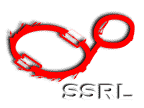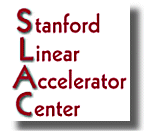Recent Advances in Medical Applications of Synchrotron Radiation
Stanford Synchrotron Radiation Laboratory
March 4-5, 2002
Program Director: Edward Rubenstein
A number of themes emerged. First, it is apparent that as medicine is becoming molecular, researchers in this discipline are focusing on ever more detailed use of information to understand disease and design drugs to intervene. The initial medical use of synchrotron radiation in coronary angiography studies continues to evolve and the images have reached exceedingly high quality. Capillary perfusion of the myocardium is now being quantified. Striking images of the interior of the ossicles were presented, and new approaches to the study of pulmonary airways, the lung parenchyma, the cerebral vasculature and the choroid plexus were discussed. Novel approaches have resulted in substantial improvements in breast imaging.
Many of the advances are the result of new optical systems based on phase contrast, x-ray interferometry, and diffraction enhanced imaging. The latter method is under development in a number of laboratories. Novel dark field images were presented as well. Advances are also being made in radiotherapy using microbeams and Auger electrons.
Several papers discussed the forthcoming development of compact storage rings dedicated to medical use. Just as storage rings have passed through several generations, two generations of investigators in this field were represented at the meeting. Former trainees are now international leaders. This was the first international workshop on medical uses of synchrotron radiation to be held at SSRL, where the field was born, nearly 23 years ago.
Agenda
Monday March 4, 2002
| Edward Rubenstein | Presentation from the Program Director | |
| Keith Hodgson | Welcome, Single Molecule Imaging | |
| James Rubenstein | Molecular Therapeutics in Cancer | |
| Katsuhito Yamasaki | Cancer of the Lung | |
| Helene Elleaume | Contrast Agent Enhanced Radiotherapy | |
Afternoon Session Chair: Wolf-Rainer Dix
| Giuliana Tromba | Medical Application of Synchrotron Radiation at Elettra: the SYRMEP Beamline | |
| Wolf-Rainer Dix | New Results of the Large Human Study on Intravenous Coronary Angiography with Synchrotron Radiation | |
| Kazuki Hyodo | Intravenous Coronary Angiography System II at the PF-AR | |
| Barton Lane | Cerebral Angiography | |
| William Thomlinson | Quantitative Functional Lung Imaging with Synchrotron Radiation using Inhaled Xenon as Contrast Agent | |
| Hiroshi Sugiyama | Magnified Optics for Medical Imaging by Means of Asymmetrical Crystal System with CCD Camera | |
Tuesday, March 5, 2002
| Joseph Roberson | Anatomy and Physiology of the Ear: A Potential Site of Medical Application of Synchrotron Radiation |
| Masami Ando | Dark Field Imaging |
| John Kinney | In Vivo, Synchrotron Radiation Tomography in Osteoporosis Research |
| Avraham Dilmanian | Microbeam Radiation Therapy at the National Synchrotron Light Source |
Afternoon Session Chair: Dean Chapman
| Dean Chapman | Diffraction Enhanced Imaging: New Directions and Methods |
| Zhong Zhong | Selection of Silicon Crystal [333], [444] and [555] Harmonic Orders in DEI |
| Brenda Laster | Synchrotron Radiation in Gene Therapy: Search and Destroy |
| Roman Tatchyn | An Overview of Synchrotron Radiation Source Technology in Medical Imaging |
| Paul Csonka | Secondary X-ray Imaging for Angiography and other Medical Imaging Applications |
| |
 |
 |
 |
